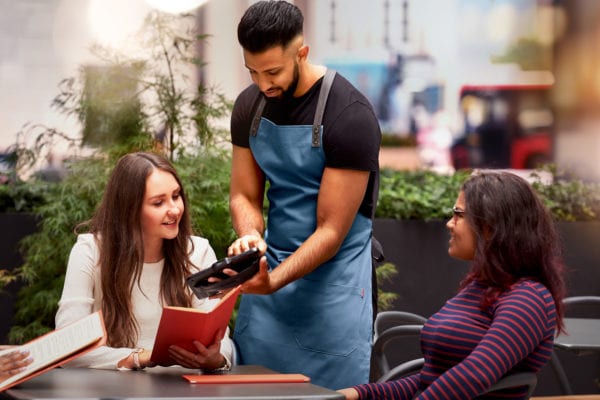WHAT’S UP?
Checking in on Bullipedia + Hacking Bullipedia
Thing to make sure doesn’t fall off of your radar: Bullipedia, the ambitious project from Ferran Adria that’s building an incredible store of wealth about all things cooking. This project, which obviously takes advantage of all sorts of digital technology, could potentially become the most important professional culinary resource to date. No small feat.
A few weeks ago, Bullipedia mastermind Ferran Adria announced that the BullipediaLab will open in Barcelona in September, focusing on building out the culinary wiki. Currently about 15 people are working on the project; soon that number will be closer to 70.
Last September, Adria held a contest titled Hacking Bullipedia, inviting tech- and food-minded talent to submit project proposals to add value to the Bullipedia project (and solve some of its inherent challenges). In the fall, a jury chose two winning teams who are presumably hard at work bringing these ideas to life. If you’re into this stuff, it’s worth a look at not only the winners, but the rest of the twelve finalists.
Exciting stuff! It’s been a while since I checked in on its progress, so nice to see it’s still moving forward. I, for one, am incredibly excited to see how this plays out. More soon!

SCIENCE
Nate Silver’s on the Hunt for the Best Burrito in America
We can argue about it ‘til we’re blue in the face, but Nate Silver’s FiveThirtyEight is taking on a highly scientific approach to the age-old question: Who makes America’s best burrito?
This all started when Silver launched his own “burrito bracket” to find the best burrito near his Chicago home. (He never finished, he says, because he was distracted by other projects. We understand.) So now with a website staff and surely plenty an eager tester at his disposal, he gives us the national, 64-restaurant burrito bracket. One very lucky journalist is already crisscrossing the country, sampling burritos from each restaurant on the list. (Also, a fun fact: FiveThirtyEight determined there are 67,391 US restaurants that serve a burrito and “To try each one, even if you consumed a different burrito for breakfast, lunch and dinner each day, would require more than 60 years and run you close to 50 million calories.”)
The FiveThirtyEight post on the matter is worth a read, as it details the rigorous process that will determine the Best Burrito. But in the process, they’re going to try to address some other restuarant-tech-related questions: “How should you evaluate crowdsourced reviews as compared to the recommendations from a professional critic, or a trusted friend? Are there identifiable biases in the review sites and ways to correct for them? When using sites like Yelp, should you pay more attention to the number of reviews, or to the average rating?” Good luck and godspeed. Pulling for you, El Farolito! (I am jealous of the burrito-tester.)
SHARE
Restaurants in the Sharing Economy
The buzziest of buzz-phrases lately: “The Sharing Economy.” We hear the term regarding cars, apartments, even time and physical skill. But what does the sharing economy have to do with restaurants?
Plenty, actually, thanks to some emerging new businesses. This is by no means an exhaustive list, but two new ideas on the radar this week. The first, CookApp, connects chefs with diners — but allows the chef to host a dinner at their own home. Sort of a dinner party 2.0 situation. Search by city and neighborhood to find an upcoming meal near you, and pay a “suggested donation” that presumably keeps this whole situation legal (as opposed to “operating a restaurant out of one’s home” which I’m sure some local governments/health departments would have a problem with.) CookApp is or is about to be in 27 cities worldwide, including eight in North America, four in Europe, and 15 in Latin America.
Similarly, sharing pioneer/superstar Airbnb is looking for hosts to participate in a pilot program to host home-cooked meals. The program is starting in San Francisco and will cost about $25 per person for a three-course meal.
This model isn’t new; a company called EatWith has been doing this with reasonable success around the world for some time. But as with Airbnb’s original business model, it’s probably only a matter of time until local regulators catch up to this new mode of sharing. We’ll see how this goes.
PSYCH
The Hidden Psychology of Ordering Food Online
If you’ve not had the pleasure of visiting a Sheetz convenience store in the mid-Atlantic states, please do stop at one the next time you’re in the area. (Sheetz was a very important high school hangout for this writer in the late ‘90s. So many MTOs.) Years ago, they debuted touch-screen ordering at stores, hence the MTO (a Made To Order). Apparently, these touch screens, which started with sub-like and breakfast sandwiches, are incredibly powerful tools to encourage people to try new ingredients or combinations or even new foods altogether.
FastCo Labs has a spectacular piece on the psychology behind this phenomenon, specifically how it applies to modern-day online ordering. (Spoiler alert: stores can trace patterns in orders / your order is more likely to show up correct / you’re more likely to order more food.) Fascinating stuff and worth a read.
Digestifs
- The best: A new issue of Dark Rye, out now — Dark Rye
- Food for thought re: Amazon’s delivery drones — WIRED
- A recap: week one of the Hack//Dining series — Food+Tech Connect
- The best grilling scenes from movies and TV — Bon Appetit


